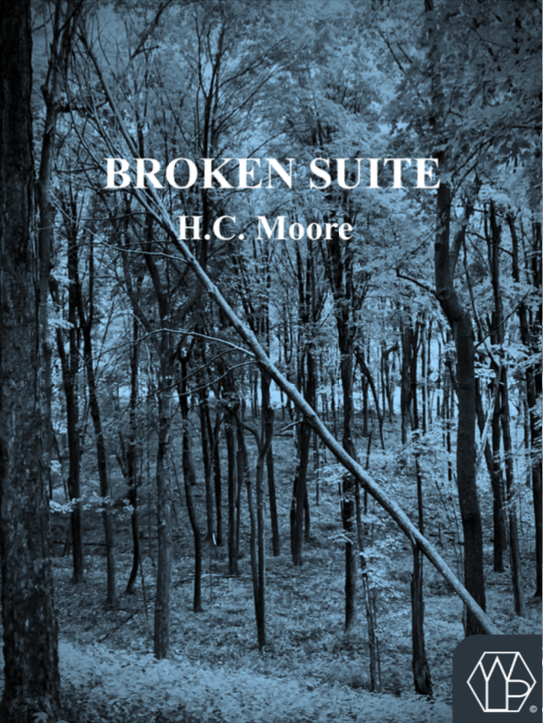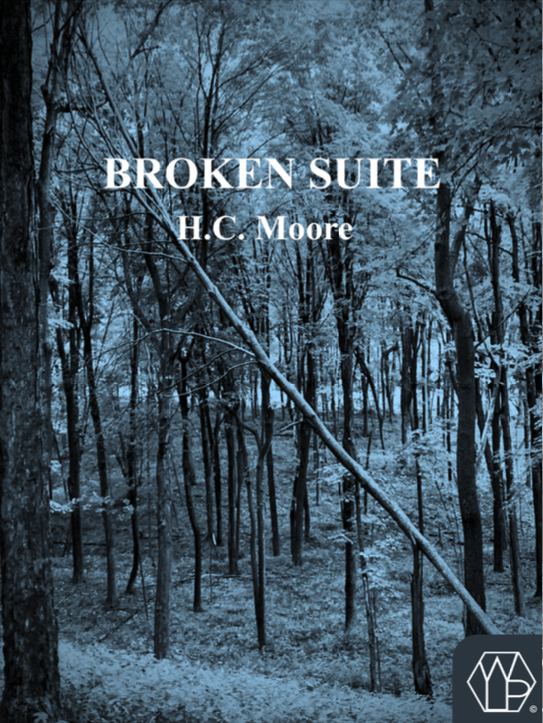Wildlight Publications
Broken Suite by Hannah Moore
Broken Suite by Hannah Moore
Multi Percussion Solo
Broken Suite as an idea came about when I was learning about Cubism, the DADA movement, found objects in visual art, and the Readymade. Specifically, the artist Marcel Duchamp and his works like Bicycle Wheel and Fountain really piqued my interest. These everyday objects, something usually not perceived as beautiful, were made into art. I took this idea of using unconventional items in art and decided to translate it to percussion music. Since found objects are already common in percussion repertoire, I decided that I would use broken instruments instead. As percussionists, we are so focused on getting the best possible sound from our instruments that when something breaks it usually becomes obsolete. I first encountered this with drum and timpani heads. When the head no longer produces the correct sound, it is replaced. But what happens with the used heads? Usually, they are thrown away. A similar thing occurs with other percussion instruments – broken marimba bars become decorations, shattered flowerpots are tossed in the trash, cracked wood blocks are seen as unusable. I wanted to take these obsolete objects and give them purpose. This led to me creating a piece with an open instrumentation using only broken instruments. The word broken is defined as, “having been fractured or damaged and no longer in working order.” All instruments used must be fractured, damaged, or no longer seen as useable in their normal context. This means that some of the instruments will audibly sound broken, while others might not (sometimes brokenness is hidden).The piece is broken up into three movements. The first movement “No Longer in Working Order,” is based off a snare drum piece I played entitled Amazonia Dreaming by Annea Lockwood. It is an improvisatory movement that uses thematic gestures from movements two and three as the base of the improvisations. The second movement “Fractured” deals with my fascination with number sequences. Specifically, variations of the equation ∑! (n − 1) which has an output of 0,1,2,3,4,etc. In the instrumentation for Broken Suite, it calls for “4 instruments of one kind (same material type, timbre, etc.), 3 of another, 2 of another and 1 of a kind.” This number sequence 4,3,2,1, is used in the opening section of the piece in the left-hand ostinato. This movement is also a palindrome, so halfway through, the music becomes a mirror image of what was played previously. When writing this portion, I discovered that when creating a palindrome effect in music, you can either take a mirror image approach, music notation looks exactly the same, or you can make the note relationships the same, therefore changing the notation (for example, a quarter note followed by an eighth note does not sound the same as an eighth note followed by a quarter note). I choose to stick with the first option, which creates a visual palindrome for the performer, but for the audience sounds like new material. The final movement’s title comes from a less common definition for the word broken “Changing Direction.” For this movement, I took inspiration from Federic Rezwski’s piece To the Earth and decided to combine spoken word with percussion. The text used for this movement was taken from definitions of the word broken along with my personal reflections on these definitions during my process of creating this piece.
Check out the video for Broken Suite
Learn more about the composer
Upon purchase, you will receive a secure 24-hour link to the digital performance materials including:
-
Full Score and Parts — PDF format
Couldn't load pickup availability
Share

Copyright Agreement
The purchase of a PDF file constitutes an agreement that the file will be used solely for individual study or performance, and as such is limited to a single printing of each PDF file, with the exception of printing/photocopying multiple copies of parts required to perform chamber or larger instrumental ensemble works. Under no circumstances may any PDF file or part thereof, or any printing or photocopies of scores/parts derived from a PDF file be copied, resold, rented, shared, published, posted, distributed, transmitted, or modified in any way without the prior consent of Wildlight Publications LLC.

